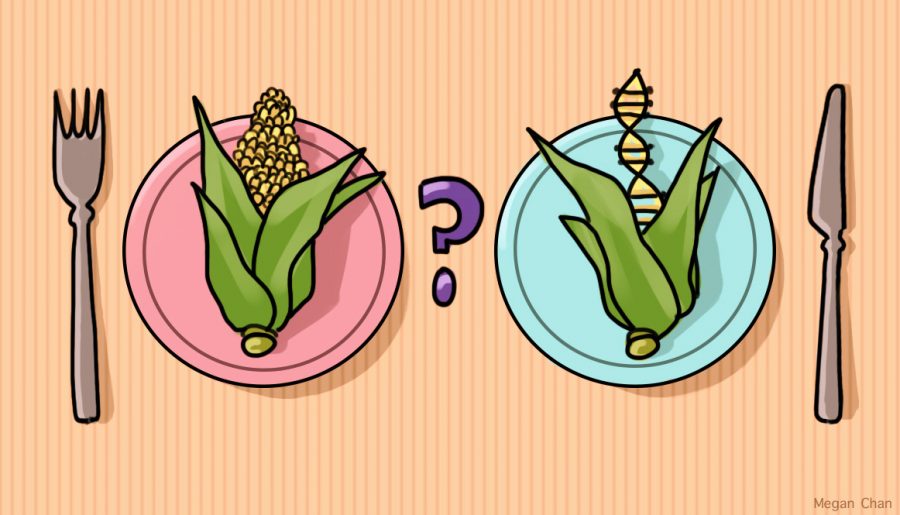Genetically Modified Organisms:
Farming’s Future or a Fatal Fallacy?
April 18, 2019

G. M. O. Genetically Modified Organism. The phrase understandably strikes fear into many people, who prophesize a doomsday where nothing is “natural” anymore, supermarkets are flooded with Frankenfood blueberries at the scale of small plums, and the ecological destruction of the fertilizers and land consumption that come with intensive agriculture.
On the other end of the spectrum are the devout believers in the absolute good of GMO foods. These people see the exponential rise in growth rates and efficient water use, resistance to plant infections that used to spoil whole seasons’ of food, and the vast humanitarian benefit of lifting billions out of poverty and having full stomachs.
Unfortunately, truth resists simple interpretation. GMO crops, like any scientific advancement, are a tool—nothing more, nothing less. They have the potential for doing great good, but us humans abused their power to grow crops whose sole purpose is to maximize yields and minimize costs.
Almost every GMO foodstuff on the market today has herbicide resistance (often of patented chemicals made by the same company), or has its “secondary” compounds (vitamins and minerals) diluted in favor of rapid growth times and larger, sugar-rich fruit. This is why people fear “GMOs”, and this is what we need to change about the ways we talk about, develop, and consume them.
The use of the term “Genetically Modified” is actually something of a misnomer, because it can mean directly altering an organism’s DNA, or simply cross-breeding plants to form better ones—a practice humans have undertaken for the last 10,000 years, domestication. The more modern, precise term is Genetic Engineering—the targeted alteration of genomic sequences to add, modify, or subtract a specific trait.
The biggest advantages of GMO crops lie in land use: because every GM plant can produce a greater yield per unit area, these crops need far less land. Water-saving genetic modifications are a huge boon in drought-prone areas like California’s central valley, where the water demand of thirsty non-GMO plants has led to the draining of nearly 40% of the state’s usable, non-brackish groundwater since 1925. GMO plants are the solution: they make more food with less land, less water, less loss to pests, and less waste.
GMOs are also incredibly valuable because of their potential to deliver lifesaving, or even just helpful, medicines, treatments, and compounds. Imagine a multivitamin not contained in a bottle of pills, but instead a package of blueberries. Diabetics could take medicinal bananas that deliver both metered doses of insulin and an extra dose of glucose. Lettuce fortified with “fullness” hormones could become a part of the ultimate weight-loss treatment. The possibilities are only limited by our scientists and our imagination.
GMOs do have their dark side, however—with any great technology comes the alluring temptation of abuse. Pesticide resistance to the compound glyphosate, found in over 90% of the major GMO cash crops (corn, soy, cotton) currently on the market, and these steep selective pressures are creating resistant pests at rates never seen before, pushing closer and closer to the precipice of crop death and famine.
More importantly, having crops that grow fast, in industrial fertilizers that only give them compounds they need, leads to food that’s no longer nutrient dense, but more comparable to eating a diet of only potatoes and white bread—sure, they can get calories and grow, but there’s a steep decline in nutritional fortitude.
We need to allow plants to put down deep roots and collect the unessential nutrients—the iron, calcium, potassium, and vitamin stocks that turn food from charging cord to real nutrition. We need to stop making GMOs the wrong way—endorsing pesticides, creating resistance, killing the nutritional value of our produce—and start creating GMOs the right way.
And it’s now, more than ever, that we need to deeply contemplate the right—and wrong—ways to make GMOs. The 2013 advent of CRISPR, a monumental technique that can accurately slice DNA for a fraction of the previous cost, has opened the floodgates for genetic engineering on more plants, animals, and even humans, then has ever been possible in the past.
We need to be responsible stewards of this power. Genetic engineering can be abused to enrich the agro-industrial complex at the expense of good food quality and the planet, but it can also create vaccine-delivering apples (among others) that literally keep the doctor away. Golden rice, a GMO strain rich in Beta-Carotene (the same stuff that gives carrots and apricots their distinctive color), is currently in development to help people get their required dosage. Capsaicin-producing tomatoes have longer shelf lives than tomatoes, produce 30 times more spice per hectare than chili peppers, and all while adding a little extra zing to your taco.
By differentiating GMOs from the developers who abuse their power and embracing them for all the good they can do, we can create a healthier, better world for all of us who live in it.

